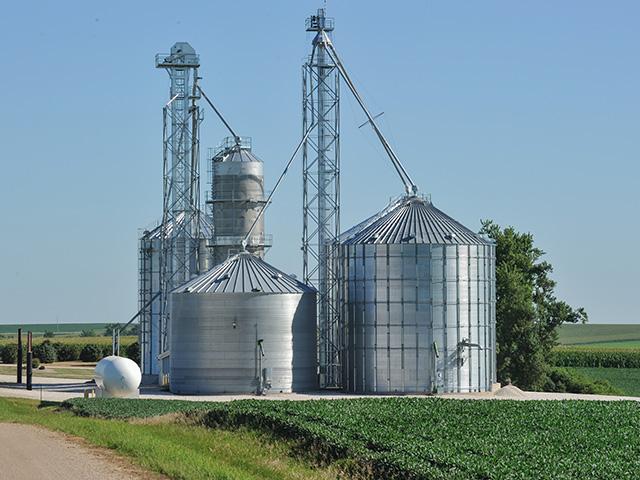
People should know and understand that entering a confined space has its risks; farmers should never work alone with stored grain, and all safety equipment should be utilized.
Schock recommended farmers establish grain bins as zero entryways. If a grain bridge does occur, use equipment, such as long PVC pipes, to break up these spots in the bin without entering the bin.
FIRST THING TO DO
If someone does get trapped in a bin, the first thing to do is to call 911 immediately. Human nature is to go into the bin to help the trapped person, but this is how more victims of an accident happen, he said.
"I know this is hard, especially with family members, but emergency services should be called first, and don't go into the bin," he said.
PREVENTION IS KEY
North Dakota State University Extension Grain Drying Specialist Ken Hellevang said keeping grain in good condition is one step to prevent grain entrapment. Grain is best stored at low temperatures and lower moisture levels.
Grain must be dried down to lower levels if it is going to be stored for longer periods of time. While corn is harvested at 18% to 20% moisture, it will need to be dried down to the 13% to 14% range for long-term storage. (https://www.dtnpf.com/…)
Grain stored at 23% to 24% moisture does not want to flow very well and can lead to grain entrapment issues. Understanding the basics of grain storage management is important, he stressed.
"Crusting and bridging are usually issues with too wet and too warm grain," Hellevang said.
INCREASE IN GRAIN ENTRAPMENTS
Purdue University have been documenting and investigating incidents with grain storage and handling facilities since the 1970s. The 2019 report (https://drive.google.com/…) showed there were 67 fatal and non-fatal grain entrapments in the country in 2019, an increase of 9.8% over 2018.
There were 39 fatal grain entrapments in 2019. Minnesota, Iowa and Nebraska reported the most cases in 2019. Minnesota had 13 cases, while both Iowa and Nebraska had eight cases in 2019.
Hellevang said farmers building larger grain storage facilities with more flowing grain is a factor in the rising cases of grain entrapment deaths.
When he started at NDSU in 1980, most grain bins on farms could only store around 3,000 bushels. Today, grain bins can store 50,000 to 60,000 bushels.
Conveying equipment 40 years ago could only handle hundreds of bushels an hour, he said. Today, the same equipment can handle thousands of bushels an hour.
Hellevang said safety equipment is needed around stored grain, but farmers also need to examine the structure and design of their bins to make sure the bins can withstand the load of a safety harness, for instance.
Manufacturers have certain spots in mind for attaching safety equipment. Farmers need to be careful to find structurally sound locations on a bin for this type of safety equipment, he said.
To watch the entire ag safety webinar, go to: https://www.youtube.com/…
Russ Quinn can be reached at russ.quinn@dtn.com
Follow him on Twitter @RussQuinnDTN
"follow" - Google News
January 29, 2021 at 04:47PM
https://ift.tt/3j76rPZ
Some Safety Practices to Follow Around Stored Grain - DTN The Progressive Farmer - DTN The Progressive Farmer
"follow" - Google News
https://ift.tt/35pbZ1k
https://ift.tt/35rGyU8
Bagikan Berita Ini















0 Response to "Some Safety Practices to Follow Around Stored Grain - DTN The Progressive Farmer - DTN The Progressive Farmer"
Post a Comment